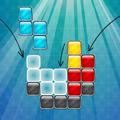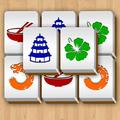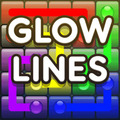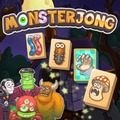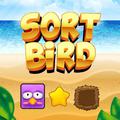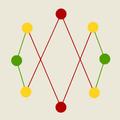
Description
"Simple Kids Puzzle Relations" is an engaging and educational puzzle game designed specifically for young children. The game helps develop essential cognitive skills by challenging kids to solve puzzles that involve understanding relationships between different objects, images, or concepts. With colorful visuals and easy-to-understand mechanics, "Simple Kids Puzzle Relations" is an ideal game for improving memory, attention, and logical thinking. It is perfect for children to enjoy while learning at their own pace.
Features
Colorful and Engaging Visuals
One of the standout features of "Simple Kids Puzzle Relations" is its vibrant and fun graphics. The game is designed with bright colors and playful illustrations that will capture children’s attention and keep them engaged as they solve puzzles. These visuals help create an enjoyable experience for kids while they develop problem-solving skills.
Simple Gameplay Mechanics
The game offers easy-to-understand gameplay, making it accessible for younger children. The puzzles are designed to be simple yet stimulating, allowing kids to learn the relationships between various objects, animals, shapes, and more. The user-friendly interface ensures that children can navigate through the game with ease.
Educational Value
"Simple Kids Puzzle Relations" isn’t just about fun; it also provides significant educational benefits. By solving puzzles, children can improve their logical thinking, pattern recognition, and memory skills. The game encourages kids to think critically and build connections between different pieces of information, which are essential for cognitive development.
Progressive Difficulty Levels
The game offers varying levels of difficulty to accommodate different age groups and skill levels. As children progress through the levels, the puzzles become slightly more complex, which helps keep them challenged and engaged. This gradual increase in difficulty ensures that children are always learning and improving at a comfortable pace.
How to Play Simple Kids Puzzle Relations
Step 1: Choose a Puzzle Theme
When you start the game, select a theme or category of puzzles. There may be options related to animals, objects, shapes, or other familiar categories that are easy for children to understand. Choose one that interests your child the most.
Step 2: Solve the Puzzle
In each puzzle, children are given a set of images or objects. They will need to identify the relationship between the images and match them accordingly. For example, they might have to match a picture of a dog with a bone, or pair a circle with a square based on shape and color. The goal is to help children make logical connections between the items.
Step 3: Progress through Levels
As children complete puzzles, they will move on to the next level, where the challenges become slightly more difficult. The game adapts to your child’s skill level, ensuring that they are always progressing and not feeling too overwhelmed.
Step 4: Enjoy the Rewards
As kids complete each puzzle, they earn rewards in the form of stars or points. These rewards provide motivation and encourage children to continue playing and learning. After completing a set of puzzles, kids may unlock new levels or features, keeping the gameplay exciting and fun.
Tips and Tricks for Playing Simple Kids Puzzle Relations
1. Start with Familiar Themes
To make the game more engaging, start with themes that your child is already familiar with. For instance, you might choose puzzles featuring animals or everyday objects. This will help them make quicker connections and enjoy the experience more.
2. Take Time to Explain the Relationships
While playing, take a moment to explain the relationships between different objects. This can help children better understand the reasoning behind the puzzle and encourage learning. For example, talk about how a cat and a mouse are related, or how a square and a rectangle are both shapes but have different properties.
3. Encourage Problem-Solving
Encourage your child to think critically when faced with more challenging puzzles. Instead of giving them the answer right away, ask guiding questions that help them figure out the relationship on their own. This will promote independent thinking and problem-solving skills.
4. Use the Game to Enhance Learning
Incorporate the puzzle themes into real-life scenarios. For example, after completing puzzles related to animals, visit a zoo or look at animal pictures together. This real-world connection will reinforce what they learned in the game.
5. Celebrate Achievements
Celebrate your child’s progress by praising their achievements after each level. Whether they earn a star or unlock a new level, positive reinforcement will encourage them to continue learning and playing.
Conclusion
"Simple Kids Puzzle Relations" is a fantastic game that combines fun with learning. Its colorful visuals, simple gameplay, and educational benefits make it a perfect choice for young children. As children solve puzzles, they develop important cognitive skills such as memory, pattern recognition, and logical thinking. With its gradual difficulty levels and rewarding system, the game keeps kids engaged while fostering their development in a fun and enjoyable way. So, let your child explore and enjoy "Simple Kids Puzzle Relations" today, and watch them sharpen their mind with every puzzle solved!
Tap on screen on mobile phone and mouse click on PC.
Embed this game


